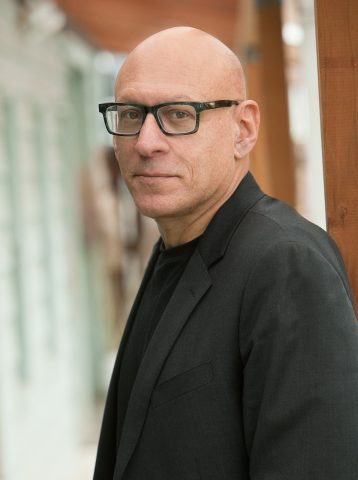The Assay Interview Project: David Shields
April 1, 2021
|
David Shields is the internationally bestselling author of twenty-three books, including Reality Hunger (recently named one of the 100 most important books of the last decade by LitHub), The Thing About Life Is That One Day You'll Be Dead (New York Times bestseller), Black Planet (finalist for the National Book Critics Circle Award), and Other People: Takes & Mistakes (NYTBR Editors’ Choice). Nobody Hates Trump More Than Trump: An Intervention was published in 2018; The Trouble With Men: Reflections on Sex, Love, Marriage, Porn, and Power appeared in 2019. James Franco’s film adaptation of I Think You're Totally Wrong: A Quarrel, which Shields co-wrote and co-stars in, was released in 2017. Shields wrote, produced, and directed Lynch: A History, a 2019 documentary about Marshawn Lynch’s use of silence, echo, and mimicry as key tools of resistance. A recipient of Guggenheim and NEA fellowships and the PEN/Revson Award and a senior contributing editor of Conjunctions, Shields has published fiction and nonfiction in the New York Times Magazine, Harper's, Esquire, Yale Review, Salon, Slate, Tin House, A Public Space, McSweeney's, Believer, Huffington Post, Los Angeles Review of Books, and Best American Essays. His work has been translated into two dozen languages.
About David Shields’ The Very Last Interview: A centuries-old tradition: in late middle age or early old age, a writer—confronting his own spiritual exhaustion and impending mortality—ruthlessly interrogates himself. Innumerable examples: Anne Carson, Alphonse Daudet, Annie Ernaux, James Baldwin, Michel Leiris, Hervé Guibert, V. S. Naipaul, J. M. Coetzee, John Cheever, Cyril Connolly, Camus. Rembrandt, Adrienne Kennedy, Milan Kundera, Philip Roth. Thomas Bernhard, Margo Jefferson, Wayne Koestenbaum, Simon Gray, Spalding Gray, Renata Adler, Eduardo Galeano, David Markson, Beckett, Michel Leiris, Rousseau, Emerson, Montaigne.
A writer is supposed to try to tell “tell the truth” about everything. What if an author were to try to tell the truth about his own work? What if he were to “read against” the affirmations offered by his previous books? Burning himself and his work down to the ground, is he conducting a mad lab experiment, opening up a new space for himself, or weirdly, agreeing with his most benighted critics? Could a writer survive such a self-dismantling? Would he be left all alone? The increasingly loud threat of suicide begins to echo. The Very Last Interview (New York Review Books, March 2022) was adapted into the anti-holiday classic of 2020, the alt-film to get depressed people past Christmas of 2020 to 2021. The film depicts an interviewer who pummels “David Shields” with increasingly personal, scathing, and troubling questions that he never answers. Šukys and Shields conducted this conversation in the days following President Biden’s inauguration on January 20, 2021. Their exchange took place via email, and, although Shields’ forthcoming book, The Very last Interview, was its organizing principle, the discussion proved to be wide-ranging. "The Very, Very Last Interview:
|
